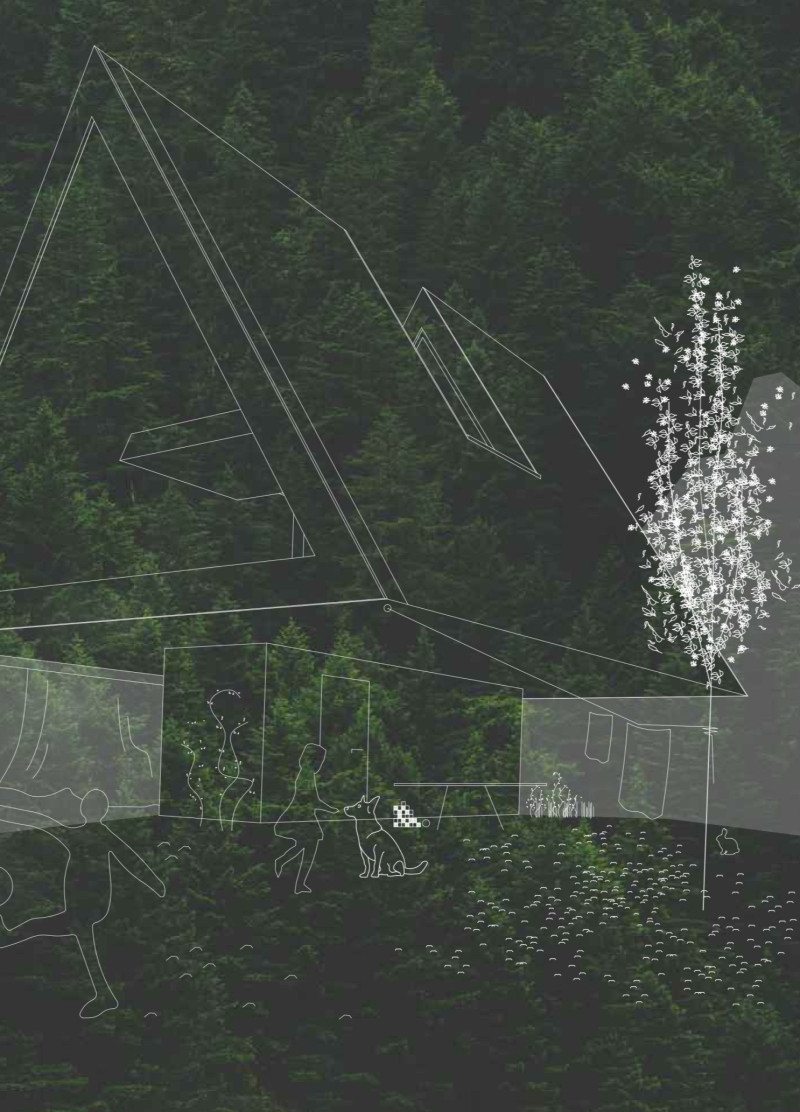5 key facts about this project
The modular camping cabin serves as a modern response to the need for affordable living spaces in the face of urban pressure. Located within a natural environment, the design functions both as a holiday home and a temporary shelter. The overall concept merges modularity and sustainability, aiming to enhance the connection between inhabitants and their surroundings.
Conceptual Framework
The project is based on the idea of integrating the building with nature. Inspired by the structure of trees, the design features a trapezoidal frame that allows for different additions, such as galleries and roof terraces. This creates a fluid interaction between indoor and outdoor spaces, improving the user experience. The layout promotes flexibility, enabling the structure to adapt to the changing needs of its occupants.
Materiality and Structure
Durability is a key aspect of the cabin, highlighted by the use of a monolithic concrete façade. This provides a strong foundation and maintains stability. The roof consists of patinated metal shingles, adding an aesthetic element that reflects light similar to how sunlight filters through a forest canopy. These material choices not only serve practical functions but also align with the goal of sustainable design.
Spatial Organization
Interior arrangements are designed to maximize functionality. A narrow service unit integrates both storage and access, making efficient use of the limited footprint. The cabin's spaces can easily shift from living areas to workspaces or recreational zones. By incorporating storage within the steep roof, the design maintains a clean look while ensuring every corner is usable.
Design Details
Distinctive triangular frames characterize the design, allowing for varied functions like bedrooms, study areas, or communal spaces. This adaptability meets the immediate needs of users and accommodates future changes in living situations. Overhangs create shaded outdoor areas that enhance comfort, encouraging residents to appreciate their natural surroundings while enjoying the cabin's amenities.






















































